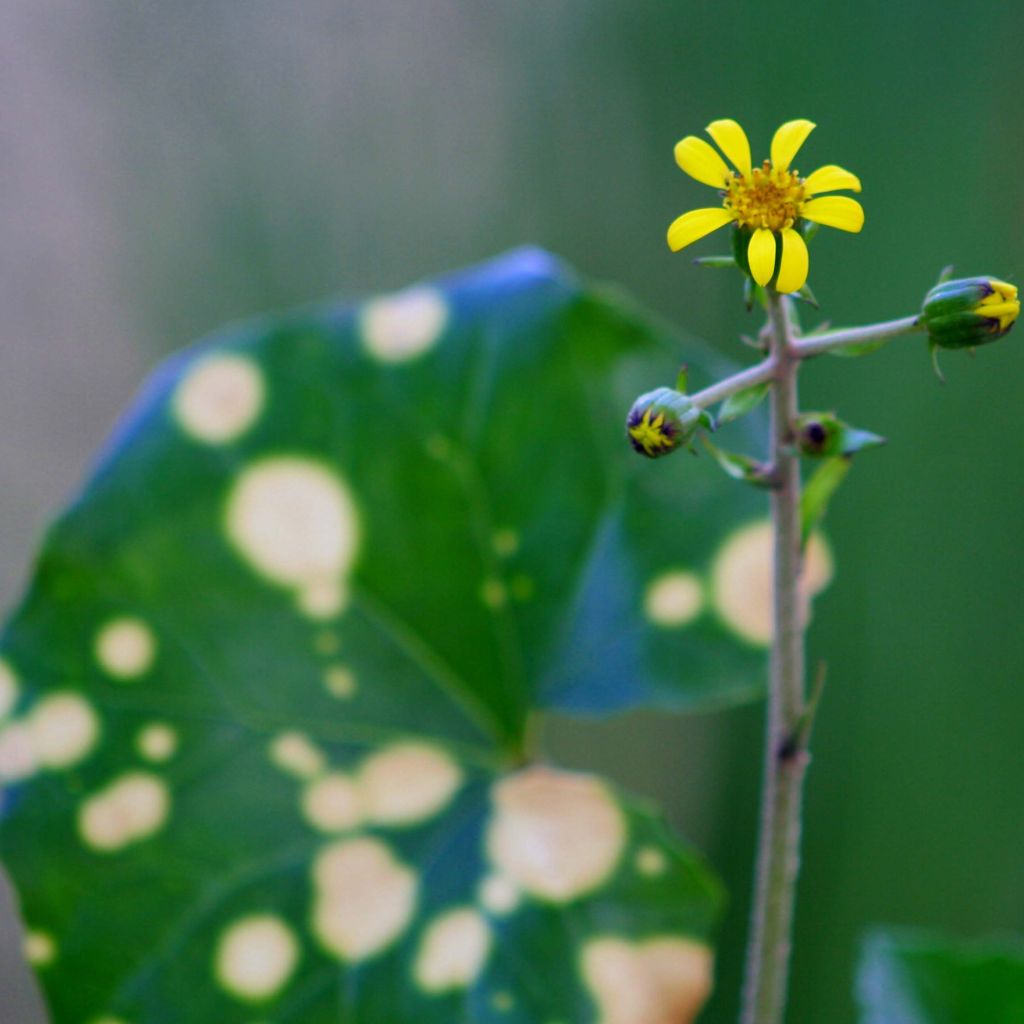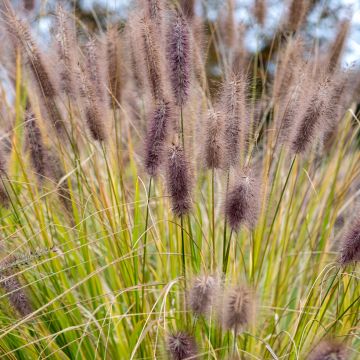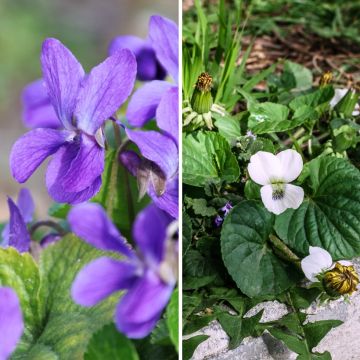

Farfugium japonicum Aureomaculatum


Farfugium japonicum Aureomaculatum


Farfugium japonicum Aureomaculatum


Farfugium japonicum Aureomaculatum


Farfugium japonicum Aureomaculatum
Farfugium japonicum Aureomaculatum
Farfugium japonicum Aureomaculatum
Leopard Plant, Green Leopard Plant
Very beautiful young plant, does not go unnoticed. Has produced leaves very quickly, planted in fresh soil in partial shade.
ANNICK, 16/03/2021
Special offer!
Receive a €20 voucher for any order over €90 (excluding delivery costs, credit notes, and plastic-free options)!
1- Add your favorite plants to your cart.
2- Once you have reached €90, confirm your order (you can even choose the delivery date!).
3- As soon as your order is shipped, you will receive an email containing your voucher code, valid for 3 months (90 days).
Your voucher is unique and can only be used once, for any order with a minimum value of €20, excluding delivery costs.
Can be combined with other current offers, non-divisible and non-refundable.
Home or relay delivery (depending on size and destination)
Schedule delivery date,
and select date in basket
This plant carries a 12 months recovery warranty
More information
We guarantee the quality of our plants for a full growing cycle, and will replace at our expense any plant that fails to recover under normal climatic and planting conditions.

Would this plant suit my garden?
Set up your Plantfit profile →
Description
The Farfugium japonicum 'Aureomaculatum' is a beautiful perennial rhizomatous and evergreen plant that is native to shaded areas and humid environments. It forms clumps of large, glossy, heart-shaped leaves that are particularly bright due to small yellow macules. In October, it produces clusters of flowers that resemble small, upright yellow daisies above its beautiful foliage. It is a somewhat tender plant with an exotic appearance, interesting for adding a touch of lushness and color to wet areas of the garden, by a pond, or even in a large pot.
Farfugium japonicum, sometimes called the leopard plant in its variegated forms like 'Aureomaculatum', is native to coastal areas of Japan, bordering watercourses. Its underground rhizome is not very invasive. It is a very beautiful perennial that forms large, slightly loose clumps, reaching a height and width of 60 cm (24in) at maturity. It spreads slowly but steadily if the conditions suit it. It bears large, tomentose leaves on long, sturdy petioles during its growth, which become thick and glossy like leather when mature, somewhat resembling those of water lilies. Each leaf measures 10 to 30 cm (4 to 12in) in diameter. They display a beautiful green color with golden yellow confetti. From October onwards, the flower stalks rise above the foliage, adorned with a few yellow heads, 2 to 3 cm (1in) wide, grouped in loose panicles.
The Farfugium japonicum Aureomaculatum, little known and not widely researched in our region, is nevertheless very useful for adding an exotic touch to shaded areas, even late in the season. It is not invasive and is sensitive to temperatures below -10°C (14°F). As it loves humidity and dislikes the sun, it can be planted near a pond or in a damp woodland. It can be paired with snowdrops, Solomon's seals, ligularias, as well as established peonies. In a Japanese garden, under the trees, the shape of the leaves, the foliage splattered with golden drops, the yellow brilliance of the flowers, and the matte gray of the stones will create a very graphic composition. It thrives well in pots and can be overwintered in a cold greenhouse, while spending the growing season on a shaded terrace.
The Japanese consume the spring leaves as cooked vegetables, as well as the buds and flowers in tempura. They also make a liqueur with the flower buds and flowers.
Report an error about the product description
Farfugium japonicum Aureomaculatum in pictures




Flowering
Foliage
Plant habit
Botanical data
Farfugium
japonicum
Aureomaculatum
Asteraceae
Leopard Plant, Green Leopard Plant
Southeast Asia
Other Perennials A to Z
View all →Planting and care
The Farfugium japonicum 'Aureomaculatum' is grown without any difficulty in shade or partial shade, in constantly moist or even wet, ordinary but fertile soil. Its cultivation requires an annual top dressing of compost, or fertilizer in spring to enrich the soil. It is hardy up to -10/-12°C (14/10.4°F), regrowing from the stump in spring. Its foliage disappears below -7°C (19.4°F). To help it withstand cold winters, install a mulch of leaves or plant debris to protect the stump.
The Farfurium japonicum is easily grown in a large pot, with proper watering. The pots will be overwintered in a cold greenhouse, allowing the plant to keep its leaves in regions where winter is too harsh. Be aware of attacks from gastropods, which are fond of young shoots.
Planting period
Intended location
Care
-
, onOrder confirmed
Reply from on Promesse de fleurs
Similar products
Haven't found what you were looking for?
Hardiness is the lowest winter temperature a plant can endure without suffering serious damage or even dying. However, hardiness is affected by location (a sheltered area, such as a patio), protection (winter cover) and soil type (hardiness is improved by well-drained soil).

Photo Sharing Terms & Conditions
In order to encourage gardeners to interact and share their experiences, Promesse de fleurs offers various media enabling content to be uploaded onto its Site - in particular via the ‘Photo sharing’ module.
The User agrees to refrain from:
- Posting any content that is illegal, prejudicial, insulting, racist, inciteful to hatred, revisionist, contrary to public decency, that infringes on privacy or on the privacy rights of third parties, in particular the publicity rights of persons and goods, intellectual property rights, or the right to privacy.
- Submitting content on behalf of a third party;
- Impersonate the identity of a third party and/or publish any personal information about a third party;
In general, the User undertakes to refrain from any unethical behaviour.
All Content (in particular text, comments, files, images, photos, videos, creative works, etc.), which may be subject to property or intellectual property rights, image or other private rights, shall remain the property of the User, subject to the limited rights granted by the terms of the licence granted by Promesse de fleurs as stated below. Users are at liberty to publish or not to publish such Content on the Site, notably via the ‘Photo Sharing’ facility, and accept that this Content shall be made public and freely accessible, notably on the Internet.
Users further acknowledge, undertake to have ,and guarantee that they hold all necessary rights and permissions to publish such material on the Site, in particular with regard to the legislation in force pertaining to any privacy, property, intellectual property, image, or contractual rights, or rights of any other nature. By publishing such Content on the Site, Users acknowledge accepting full liability as publishers of the Content within the meaning of the law, and grant Promesse de fleurs, free of charge, an inclusive, worldwide licence for the said Content for the entire duration of its publication, including all reproduction, representation, up/downloading, displaying, performing, transmission, and storage rights.
Users also grant permission for their name to be linked to the Content and accept that this link may not always be made available.
By engaging in posting material, Users consent to their Content becoming automatically accessible on the Internet, in particular on other sites and/or blogs and/or web pages of the Promesse de fleurs site, including in particular social pages and the Promesse de fleurs catalogue.
Users may secure the removal of entrusted content free of charge by issuing a simple request via our contact form.
The flowering period indicated on our website applies to countries and regions located in USDA zone 8 (France, the United Kingdom, Ireland, the Netherlands, etc.)
It will vary according to where you live:
- In zones 9 to 10 (Italy, Spain, Greece, etc.), flowering will occur about 2 to 4 weeks earlier.
- In zones 6 to 7 (Germany, Poland, Slovenia, and lower mountainous regions), flowering will be delayed by 2 to 3 weeks.
- In zone 5 (Central Europe, Scandinavia), blooming will be delayed by 3 to 5 weeks.
In temperate climates, pruning of spring-flowering shrubs (forsythia, spireas, etc.) should be done just after flowering.
Pruning of summer-flowering shrubs (Indian Lilac, Perovskia, etc.) can be done in winter or spring.
In cold regions as well as with frost-sensitive plants, avoid pruning too early when severe frosts may still occur.
The planting period indicated on our website applies to countries and regions located in USDA zone 8 (France, United Kingdom, Ireland, Netherlands).
It will vary according to where you live:
- In Mediterranean zones (Marseille, Madrid, Milan, etc.), autumn and winter are the best planting periods.
- In continental zones (Strasbourg, Munich, Vienna, etc.), delay planting by 2 to 3 weeks in spring and bring it forward by 2 to 4 weeks in autumn.
- In mountainous regions (the Alps, Pyrenees, Carpathians, etc.), it is best to plant in late spring (May-June) or late summer (August-September).
The harvesting period indicated on our website applies to countries and regions in USDA zone 8 (France, England, Ireland, the Netherlands).
In colder areas (Scandinavia, Poland, Austria...) fruit and vegetable harvests are likely to be delayed by 3-4 weeks.
In warmer areas (Italy, Spain, Greece, etc.), harvesting will probably take place earlier, depending on weather conditions.
The sowing periods indicated on our website apply to countries and regions within USDA Zone 8 (France, UK, Ireland, Netherlands).
In colder areas (Scandinavia, Poland, Austria...), delay any outdoor sowing by 3-4 weeks, or sow under glass.
In warmer climes (Italy, Spain, Greece, etc.), bring outdoor sowing forward by a few weeks.



















































